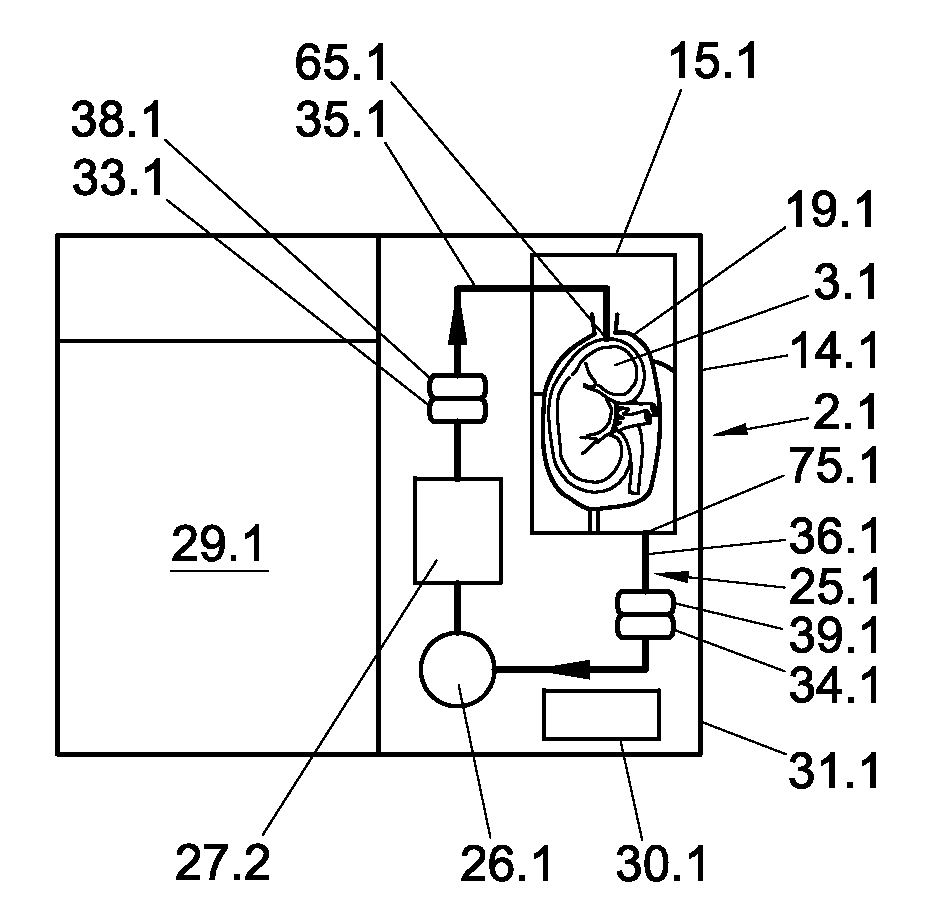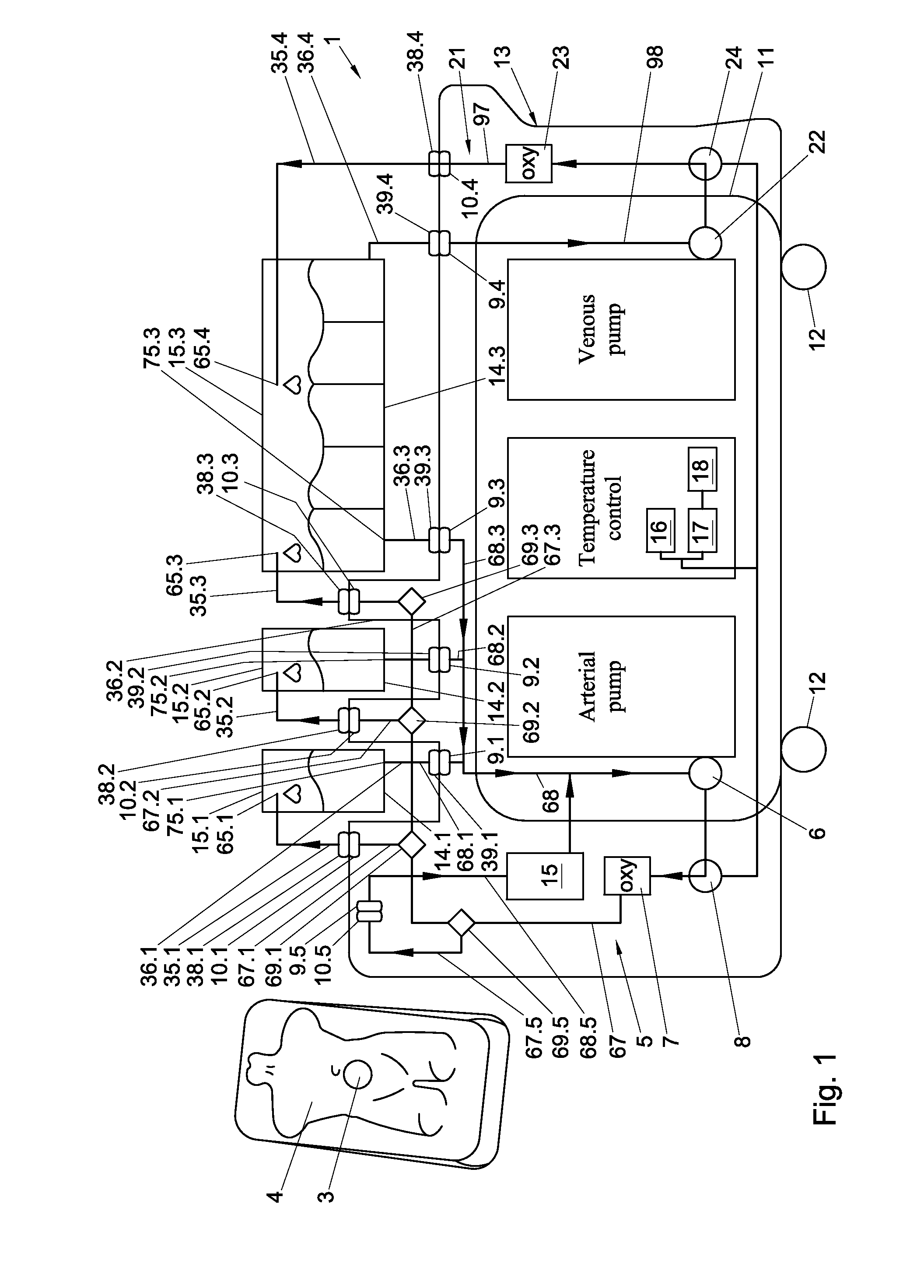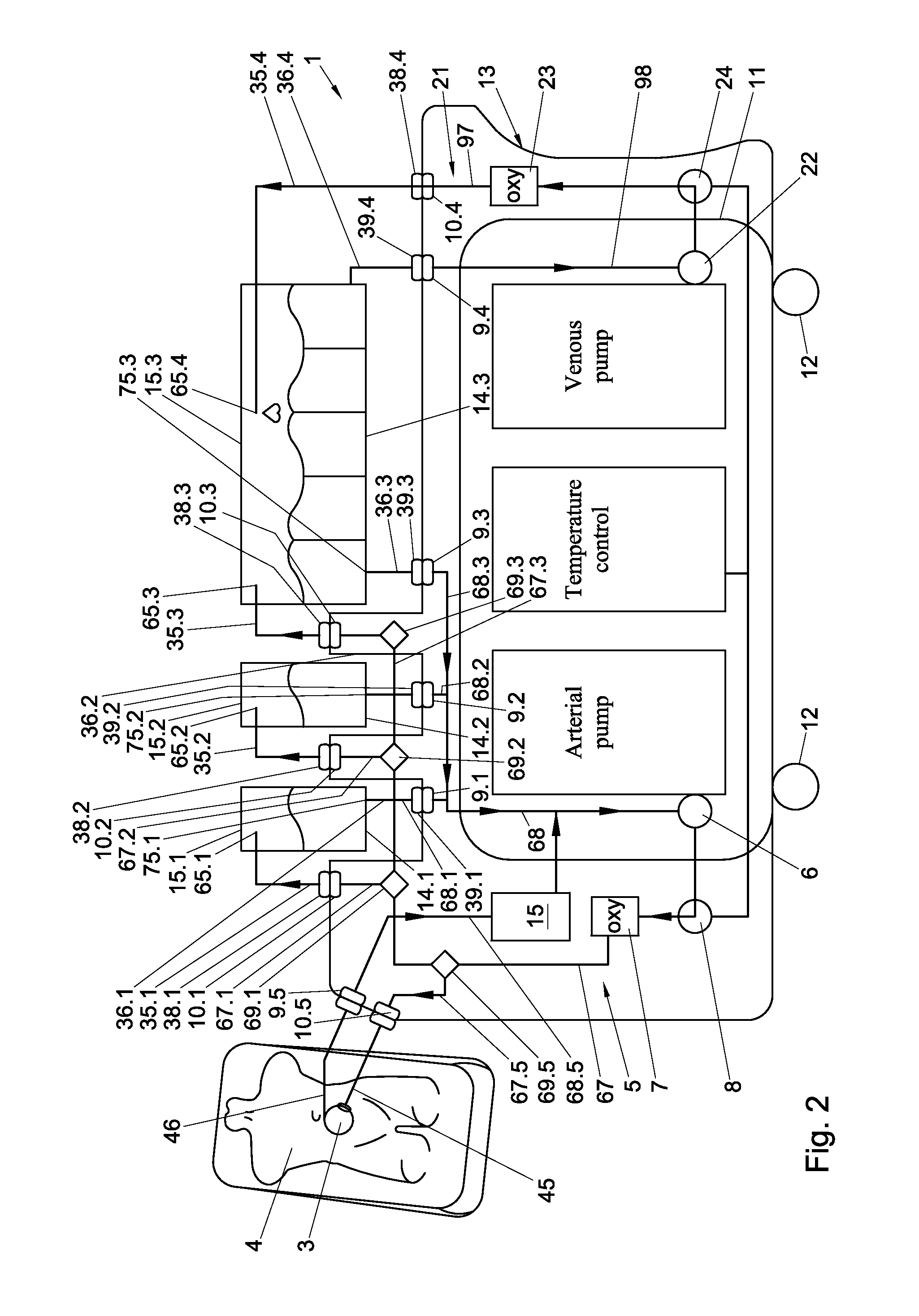Apparatus, system and method for conditioning and preserving an organ from a donor
a technology of organs and apparatuses, applied in the field of apparatus, a system and a method for conditioning and preserving an organ from a donor, can solve problems such as organ decay, and achieve the effect of improving the conditioning of organs
- Summary
- Abstract
- Description
- Claims
- Application Information
AI Technical Summary
Benefits of technology
Problems solved by technology
Method used
Image
Examples
Embodiment Construction
[0016]First an example of an organ treatment apparatus 1 shown in FIGS. 1-5, 10 and 11 and examples of organ transport units 2.1, 2.3 are shown in FIGS. 8 and 9 are described. Together, the treatment apparatus 1 and the transport unit 2 constitute a system for preserving organs 3 of a deceased donor 4 for implantation into a patient.
[0017]The organ treatment apparatus 1 includes a first perfusion liquid circuit 5 equipped with a pulsatile pump 6, an oxygenator 7 and a heat exchanger 8 for cooling or warming liquid in the perfusion liquid circuit 5 passing through the heat exchanger 8. The perfusion liquid circuit 5 extends between supply ends 65.1, 65.2, 65.3 and return inlet ends 75.1, 75.2, 75.3 in organ containers 14.1, 14.2 and 14.3. A second perfusion liquid circuit 21 is provided for providing venous perfusion of a liver 3.3. The second perfusion liquid flow circuit 21 is equipped with a second, non-pulsatile pump 22, a second oxygenator 23 and a second heat exchanger 24 commu...
PUM
 Login to View More
Login to View More Abstract
Description
Claims
Application Information
 Login to View More
Login to View More - R&D
- Intellectual Property
- Life Sciences
- Materials
- Tech Scout
- Unparalleled Data Quality
- Higher Quality Content
- 60% Fewer Hallucinations
Browse by: Latest US Patents, China's latest patents, Technical Efficacy Thesaurus, Application Domain, Technology Topic, Popular Technical Reports.
© 2025 PatSnap. All rights reserved.Legal|Privacy policy|Modern Slavery Act Transparency Statement|Sitemap|About US| Contact US: help@patsnap.com



